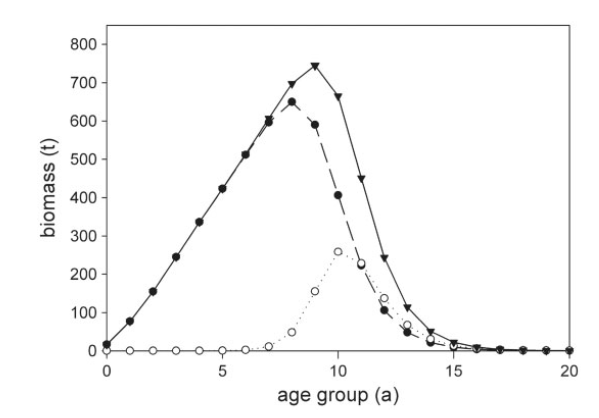Sometimes less is more!
Less effort, more yield! What sounds like a typical phishing mail is nothing new in fisheries management and the European eel is no exception. This could also be uitilized for conservation of the species; but we’re not quite there yet

Chances of survival are slim for eels in Germany. For example in the Elbe River, escapement is only 16% of what it could be without anthropogenic mortalities (mostly hydropower & Fisheries). In addition, management relies heavily on restocking to achieve the EU’s management target of 40% biomass of pristine escapement (i.e. before ANY anthropogenic influence), since the target can barely be achieved given an approx. 10-fold decrease in natural recruitment. The resulting paradox is, that large amounts of eel are restocked in areas of high mortality – with the intention to facilitate the recovery of the species. Changing Minimum landing sizes from 45cm to 60cm could more than double escapement, while maintaining 80% of fisheries yields
Without minimum landing size (MLS), given the current fishing intensity and hydropower mortality, only 3% of the 2010 cohort in the river Elbe would escape the system as mature silver eels, as compared to the biomass without fisheries or hydropower. The explanation is quite simple: Young eels have a high potential for growth, whereas losses due to emigration or natural mortality are comparably small. Hence, the maximum biomass of a cohort is reached at an age of approximately 9 years, when losses (primarily) due to emigration exceed the now-smaller growth potential. If eels are caught earlier, the growth potential is not utilized effectively, if caught later, biomass will be lower due to emigration.
At the actual MLS of 45cm in the Elbe River, yield is more than doubled, while at the same time escapement is increased to approx. 16% of the theoretical maximum today. Barely enough though, since the EU biomass target aims at 40% of pristine escapement, i.e. 40% of escapement biomass without anthropogenic mortality at a time where recruitment (i.e. young of the year) was at least 10 times higher. Consequently, this target can only be achieved by restocking, while it is implicit that wild caught eels will be relocated to an area of (too) high mortality.
An increase of MLS to approx. 60cm would already suffice to achieve 40% of the potential escapement today; though entailing a reduction in yields by approx. 20%, higher yields are simply beyond what is possible when aiming for respective escapement.
- More information: „Sustainable use of the European eel“
- Kontact: Jan-Dag Pohlmann
- Kontact: Prof. Reinhold Hanel

![[Translate to English:] [Translate to English:]](/media/_processed_/2/9/csm_Embryo-Exp_Gelege_9F_dpf5-200513111619_c8534a8199.jpg)
![[Translate to English:] [Translate to English:]](/media/_processed_/2/9/csm_Embryo-Exp_Gelege_9F_dpf5-200513111619_9027994d44.jpg)





